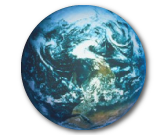December 14, 2018 ·
As 2018 winds down our team at ERAscience is looking back at some of the year’s great moments. On October 20th we were beyond honored and happy as ERAscience partnered with #Univision & CSUN to present Univision’s Féria de Educacion Science & Technology pavillion! Thirty thousand in attendance! Infinite thanks to the event producers and huge applause to CNSI for sparking the minds of thousands of kids at the CNSI installation!!
Great day as ERAscience, CNSI UCLA (California NanoSystems Institute) and Univision, collaborate to bring fun, hands on science experience to 30,000 kids and their parents at Univision's 2016 Feria de Educacion held at Cal State Northridge University Satuday October 15th.
TBT to February 2015 and the launching of NOAA's, ( National Oceanic and Atmospheric Administration), Deep Space Climate Observatory (DSCOVR) satellite. The primary objective of the DSCOVR mission is to maintain the nation’s real-time solar wind monitoring capabilities, which are critical to the accuracy and lead time of space weather alerts and forecasts.
A NASA camera aboard DSCOVR captured a unique view of the moon as it moved in front of the sunlit side of Earth last month. The series of test images shows the fully illuminated “dark side” of the moon that is never visible from Earth.
The images were captured by NASA’s Earth Polychromatic Imaging Camera (EPIC), a four megapixel CCD camera and telescope on the DSCOVR satellite orbiting 1 million miles from Earth.
This animation features actual satellite images of the far side of the moon, illuminated by the sun, as it crosses between the DSCOVR spacecraft's Earth Polychromatic Imaging Camera (EPIC) and telescope, and the Earth – one million miles away.
Credits: NASA/NASA
EPIC maintains a constant view of the fully illuminated Earth as it rotates, providing scientific observations of ozone, vegetation, cloud height and aerosols in the atmosphere. Once EPIC begins regular observations next month, the camera will provide a series of Earth images# allowing study of daily variations over the entire globe. About twice a year the camera will capture the moon and Earth together as the orbit of DSCOVR crosses the orbital plane of the moon. These images were taken between 3:50 p.m. and 8:45 p.m. EDT on July 16, showing the moon moving over the Pacific Ocean near North America. The North Pole is in the upper left corner of the image, reflecting the orbital tilt of Earth from the vantage point of the spacecraft. The far side of the moon was not seen until 1959 when the Soviet Luna 3 spacecraft returned the first images. Since then, several NASA missions have imaged the lunar far side in great detail. The same side of the moon always faces an earthbound observer because the moon is tidally locked to Earth. That means its orbital period is the same as its rotation around its axis.

